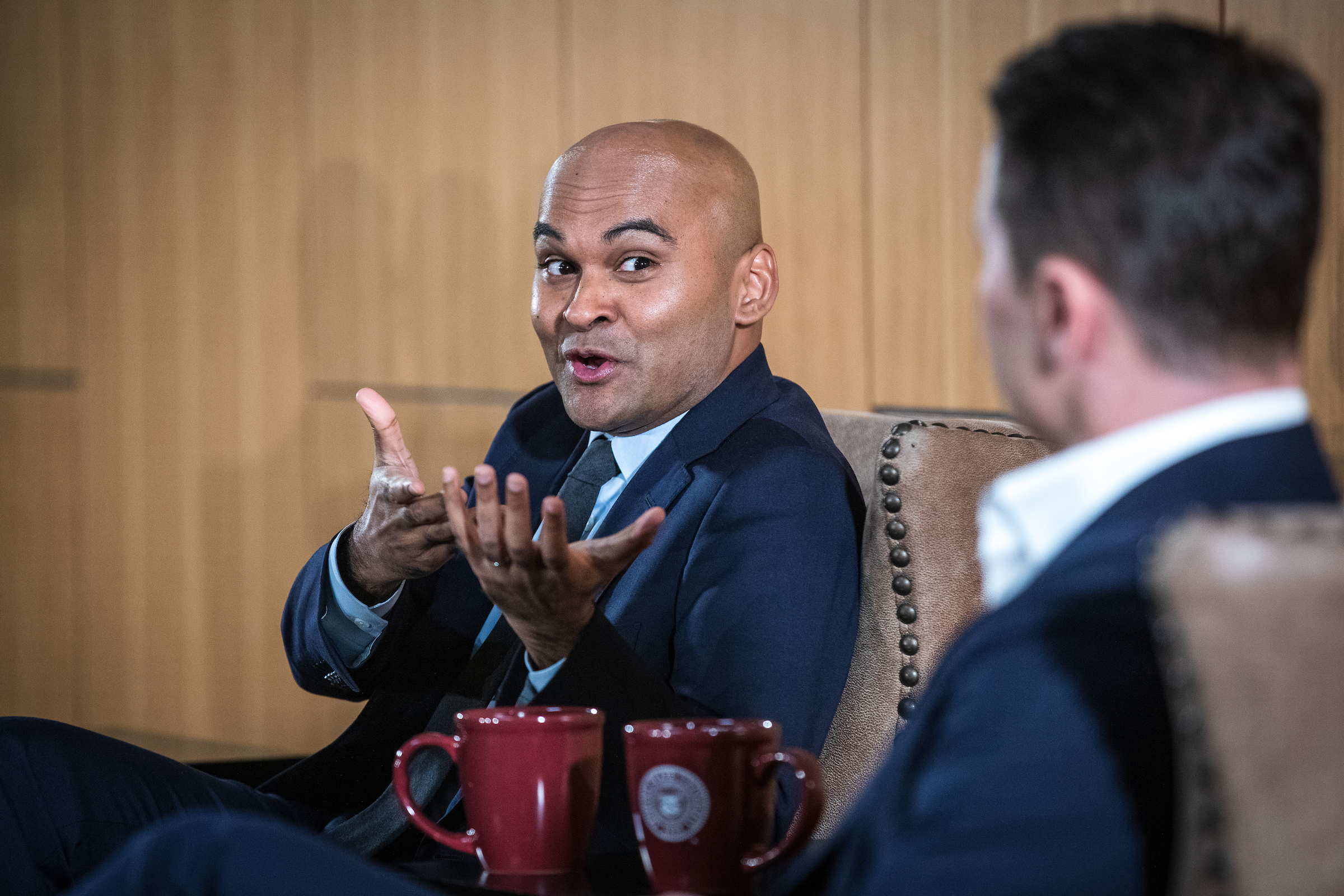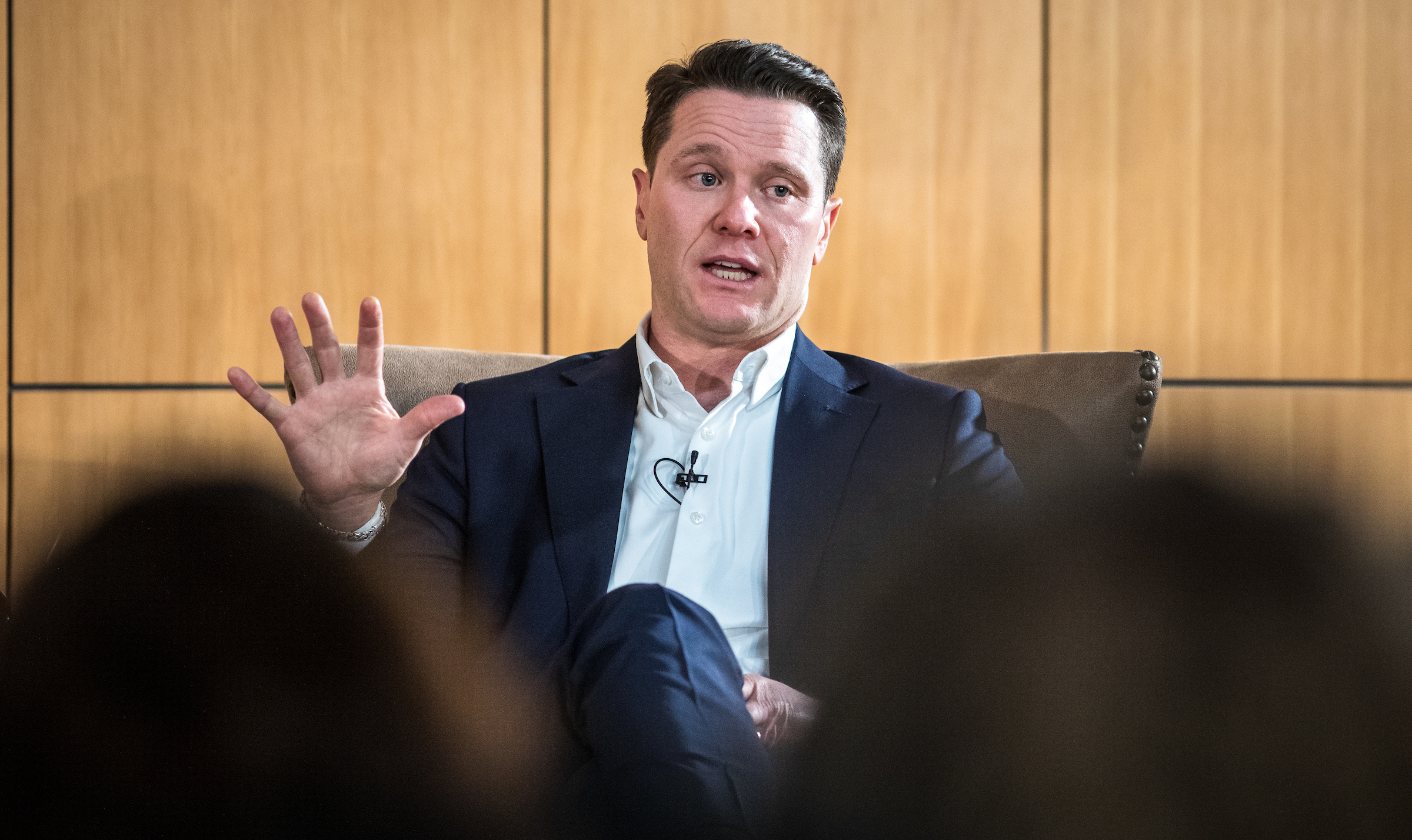When people move to the United States, their journey to assimilation is a complex process that involves change for everyone in the community, according to two authors who have studied this contemporary issue.
Reihan Salam, author of the upcoming “Melting Pot or Civil War: A Son of Immigrants Makes the Case Against Open Borders,” and Tomás Jiménez, author of “The Other Side of Assimilation: How Immigrants are Changing American Life,” spoke at Arizona State University on Wednesday night. Their talk, titled “Becoming American: Immigration and Civic Integration,” was sponsored by the School of Civic and Economic Thought and Leadership at ASU.
The two men discussed how assimilation is not an either/or event.
“Assimilation is a moving target,” said Salam, who is executive editor of the National Review.
“If you’re trying to define it very narrowly, it’s becoming more like the ‘average person,’ but immigration changes the nature of the country over time. You’re not hitting a fixed target.”
Reihan Salam,who spoke at ASU Wednesday night, is author of the upcoming “Melting Pot or Civil War: A Son of Immigrants Makes the Case Against Open Borders." Photo by Charlie Leight/ASU Now
There’s also a difference between immigrants who circle back and forth from America to their home country and those who never return.
“Vietnamese immigrants, in the wake of the Vietnamese war, were among the most assimilated mostly because there was an expectation that Vietnam was not a homeland that one could return to regularly,” he said.
Jiménez said that assimilation involves “mutual change.”
“There’s a back and forth volley of adjustment and readjustment happening in a cultural context, with respect to notions of success and failure in school, and with respect to the notion of who belongs and on what basis,” said Jiménez, who is professor of sociology and comparative studies in race and ethnicity at Stanford University.
“If I had to distill it down, it’s the decline of an ethnic boundary, when people see each other as more similar than different.”
Population demographics in America have changed over time, and that’s shaped attitudes toward immigration, Salam said.
He noted that the share of the foreign-born population has increased sharply, to about 13%, in the context of a steep decrease in the number of native-born children. Decades ago, people believed that investing in their community would mostly benefit their own descendants, but that’s no longer the case.
“It has to do with replenishment. It’s a game of numbers,” he said.
“I believe it’s one reason why you see such intense polarization around these issues.”
Public perception also doesn’t always match what’s really happening, Jiménez said.
“One of the most underappreciated events in the demography of immigration is the end of a mass wave of Mexican immigration that had gone uninterrupted for 100 years, and it came at the end of the Great Recession,” he said.
“Since then, Mexican immigration has been a net negative. That’s had a profound impact on the population but not an impact on the way the population is perceived.
“Ten years ago, 1 in 4 people of Mexican descent were undocumented. Now it’s 15%.”
Both men agreed that the current immigration system, with waits of a decade or longer, is inefficient and inhumane, but they differ on how open the process should be.
“Today’s immigrants come overwhelmingly from Asia and Latin America and those immigrants, across the generations, are integrating as fast if not faster than the immigrants of the great European immigration from the late 19th and early 20th centuries,” Jiménez said.
Tomás Jiménez, who spoke at ASU Wednesday night, is author of “The Other Side of Assimilation: How Immigrants are Changing American Life." Photo by Charlie Leight/ASU Now
Mass legalization of the 11 million undocumented immigrants in the United States would speed that integration, he said.
“The condition of illegality is not only a drag on their integration, it’s a drag on the integration of subsequent generations,” he said. “We know from social science research that the penalty reverberates three generations into the future.”
He said that the DACA program, which is not legalization, still benefitted the young people it affected.
“The best data we have showed that their mental health improved, the mental health of their children improved, they were more likely to get married and spend money,” he said.
“The most recent polling shows that 80% of the American public favors a legalization program.”
Salam said that immigration used to be thought of in the context of the need for a lot of low-skilled labor, but with that need decreasing and the need for highly skilled labor increasing, the conversation has changed.
“I believe our system is incoherent and does not align with the values and sensibilities of a majority of America,” he said. “In our system, now you have a wait list of over 4 million people in the queue for family preference visas. If you have a job offer in the U.S. and speak English fluently, guess what? You cannot move up the queue.”
He said that the U.S. should establish a pathway of skills for immigrants, including avenues for refugees and asylum-seekers.
“When it comes to skills I believe in a blended approach rather than the binary approach we have now, where you’re either an affluent, sophisticated, highly skilled person or an underdog,” Salam said.
“Another way to think of it is a system that serves as a roadmap: ‘Here are the things that it takes for you to thrive and survive in this country.’ We want a policy that protects a certain kind of continuity and in light of a changing safety net.”
Top image: Reihan Salam (left) and Tomás Jiménez immigration at the SCETL Civic Discourse Project talk, "Becoming American: Immigration and Civic Integration," on Wednesday at the Memorial Union. The talk was part of the school’s Civic Discourse Project, now in its third year, with the theme “Citizenship and Civic Leadership in America.” Photo by Charlie Leight/ASU Now
More Law, journalism and politics
Can elections results be counted quickly yet reliably?
Election results that are released as quickly as the public demands but are reliable enough to earn wide acceptance may not always be possible.At least that's what a bipartisan panel of elections…
Spring break trip to Hawaiʻi provides insight into Indigenous law
A group of Arizona State University law students spent a week in Hawaiʻi for spring break. And while they did take in some of the sites, sounds and tastes of the tropical destination, the trip…

LA journalists and officials gather to connect and salute fire coverage
Recognition of Los Angeles-area media coverage of the region’s January wildfires was the primary message as hundreds gathered at ASU California Center Broadway for an annual convening of journalists…




